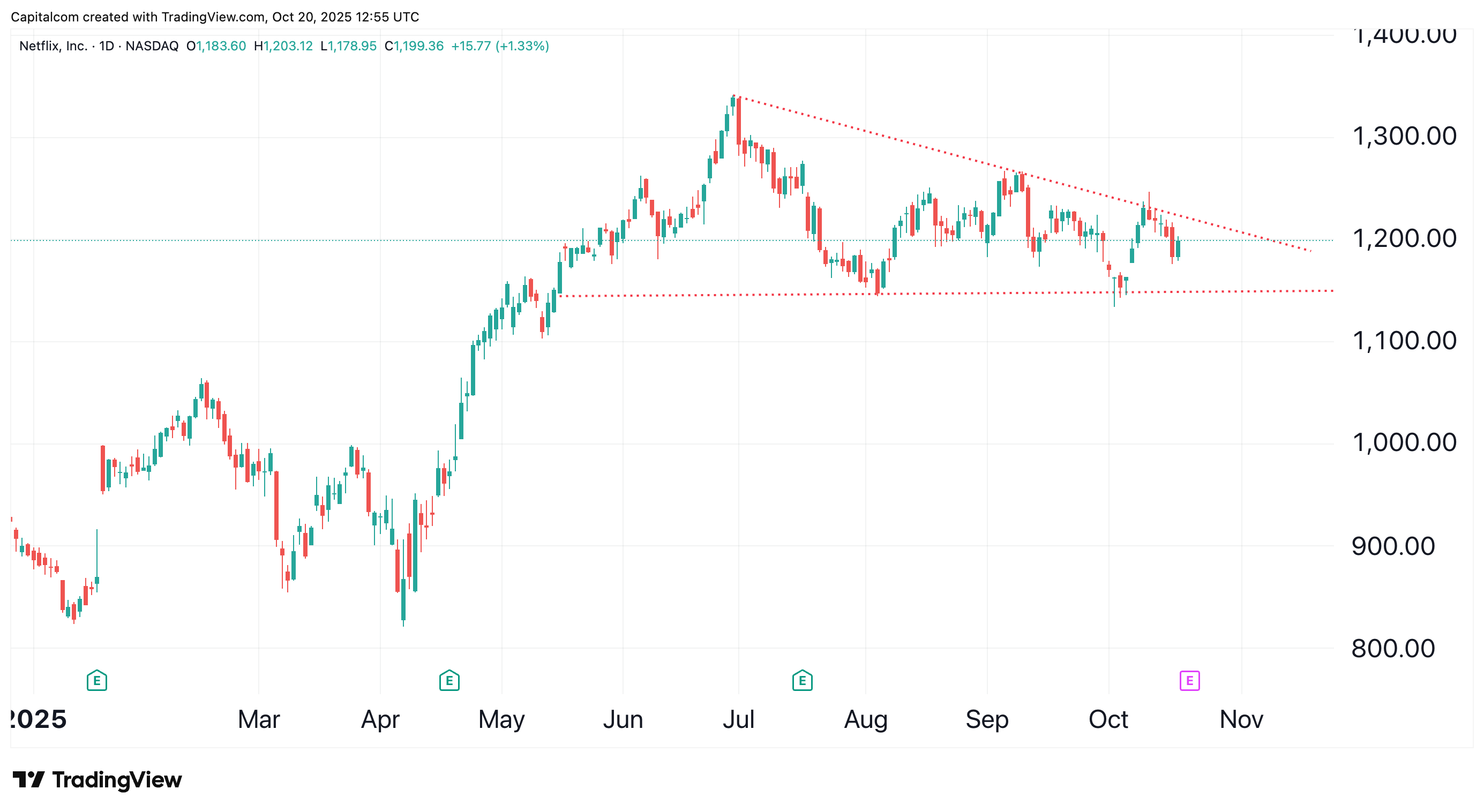Netflix Q3 Earnings Preview: Ad growth in focus
Netflix will report earnings on October 21 with focus on ad revenue after moving away from subscriber data
Netflix reports on Tuesday the 21st of October with consensus on 11.5bn revenue (+17% y/y) and EPS around $6.9–7.0, sustaining the double-digit growth tempo that followed July’s beat and full-year guidance higher.

What investors will focus on
Netflix stopped giving quarterly subscriber counts in 2025, pushing attention to revenue, margins and engagement therefore the focus will shift to advertising reach and pricing. The ad-supported plan had 94m monthly active users by May, and Netflix has been rolling out its in-house Ads Suite across all ad markets which is key for targeting and measurement. Commentary on how ad revenue has evolved in 2025 will be key.
After several price rises and paid-sharing enforcement, the core debate is whether average revenue per user (ARPU) and ad load can keep revenue growth running faster than content costs and capital expenditures. If ARPU keeps edging up and the ads business gains traction, revenue can outpace the growth in content amortisation and investment in tech/data centres, lifting margins and free cash flow; if cost inflation in premium content, live rights or platform build-out runs ahead of monetisation, margins compress. July’s update lifted 2025 revenue guidance and nudged the operating-margin target to around 29.5%, so investors will watch if that buffer widens.
A print that meets or raises on revenue, shows ad momentum, and protects margins and free cash flow should support the stock, given July’s raised guide and the market’s pivot to monetisation quality. Conversely, a wobble in ad KPIs (reach, CPMs, tech rollout), or a softer margin/free cash flow trajectory, would likely cap upside—even if engagement headlines are strong—because investors now prize profit durability over raw subscriber growth.
Technical outlook
Netflix’s stock has been trading around $1,200 for the past three months, well below its 2025 average target of $1,360, suggesting there is still further upside of 13% before the target is reached. However, the trend has had a bearish bias since the highs in July, with lower highs creating a descending trendline acting as resistance, currently around $1,220.
The daily chart suggests a descending triangle pattern which could see further tests of the upside descending trendline, but ultimately a break below support at $1,150, especially if disappointment in the earnings arises.
Netflix (NFLX) daily chart

Past performance is not a reliable indicator of future results.